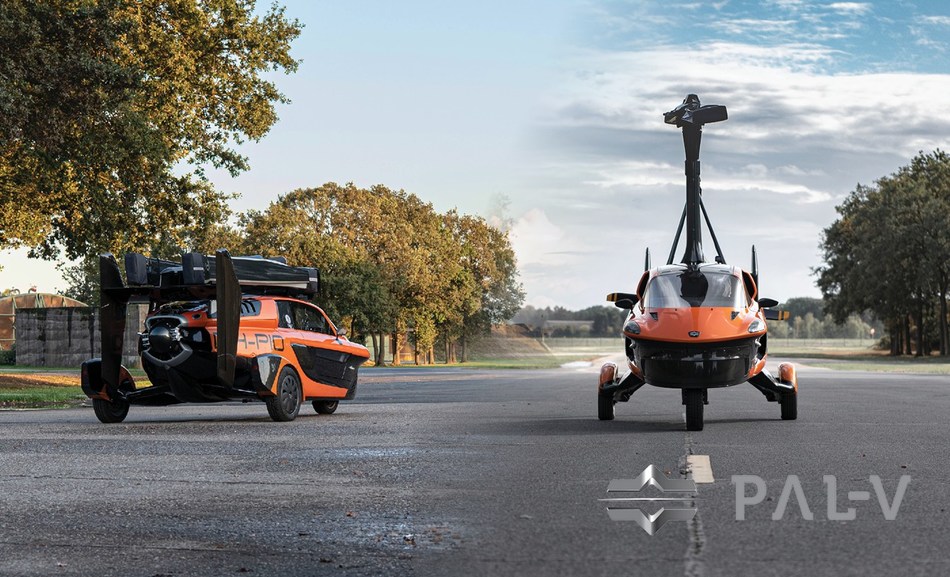
Since 2008, PAL-V has been developing a flying car. In 2012, it had its first breakthrough: fly-and drive-testing the PAL-V One. PAL-V has set major steps since, it has now realized its production facility in which it built its first product, the PAL-V Liberty. The order book is growing and last week the PAL-V started the European Road Admission, a major milestone towards the start of delivery. The air certification has reached the final stage as well, compliance demonstration.
Robert Dingemanse, CEO of PAL-V: “The term flying cars is used for two different applications. The first flying cars, fly and drive, and are used like cars for personal mobility going from door-to-door between towns and cities. Imagine living in Geneva and driving your flying car from your garage to go to an appointment in Cannes (South-France). Driving 10 minutes to the nearest (grass) airstrip, take-off and be on your way to Cannes. After 2 hours you land near Cannes and in minutes you convert your aircraft back to car-mode. Another 10-minute drive and you arrive at your appointment in the city. A journey that normally takes 5.5 hours will now take only 2.5 hours. On top, you enjoyed the birds-eye view of the Alps, the French countryside, and the freedom of flying. A dream comes true.”
According to Dingemanse, certification, safety, ease of use, performance, and compactness on the road are critical design factors in developing flying cars. “No one wants to fly a car that isn’t certified, hard to fly or that doesn’t fit a standard parking spot,” says Dingemanse.
The other application is flying cars designed to only fly and to be used in urban environment. Mike Stekelenburg, CTO of PAL-V: “We expect that flying above cities will start 8-12 years from now. These vehicles are called urban air-taxies or eVTOLs (electrical Vertical Take-Off and Landing). They are designed for use as public transportation, flying from platform-to-platform and not going from door-to-door. They’re an alternative to helicopters, metros, and busses.” PAL-V has also filed patents for a competitive solution for this market. It recently teamed up with the Netherlands Aerospace Centre, Stekelenburg; “While the PAL-V Liberty is designed for going from door-to-door, this eVTOL is useful for Urban Air Mobility.”
According to Dingemanse, we will take our cars to the sky in 2021 and the PAL-V Liberty can be seen on the roads in the upcoming months. However, before we see air-taxies in urban environment we still have to wait another 10 years, because of the many challenges like regulations, infrastructure, technology, noise, safety, city turbulence, and social acceptance.
SOURCE PAL-V International B.V.